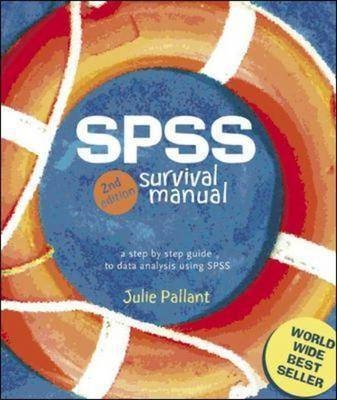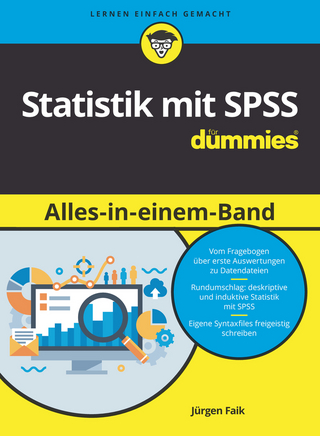
SPSS Survival Manual
Open University Press (Verlag)
978-0-335-21640-6 (ISBN)
- Titel ist leider vergriffen;
keine Neuauflage - Artikel merken
The SPSS Survival Manual throws a lifeline to students and researchers grappling with the SPSS data analysis software. In this fully revised edition of her bestselling text, Julie Pallant guides you through the entire research process, helping you choose the right data analysis technique for your project. From the formulation of research questions, to the design of the study and analysis of data, to reporting the results, Julie discusses basic and advanced statistical techniques. She outlines each technique clearly, with step-by-step procedures for performing the analysis, a detailed guide to interpreting SPSS output and an example of how to present the results in a report. Statistical techniques covered include:
Descriptive statistics
Correlation
Multiple regression
Logistic regression
Factor analysis
T-tests
Analysis of variance
Multivariate analysis of variance
Analysis of covariance
Non-parametric tests
For both beginners and experienced SPSS users in psychology, education, business, sociology, health and related disciplines, the SPSS Survival Manual is an essential guide. Illustrated with screen grabs, examples of output and tips, it is supported by a website with sample data and guidelines on report writing. This second edition includes new examples, a new section on logistic regression and fully integrated coverage of SPSS version 12.
Julie Pallant has spent many years helping students overcome statistics phobia. She is currently a research coordinator in the Faculty of Medicine, Dentistry and Health Sciences at the University of Melbourne, Australia. Previously she has also worked as an applied statistics lecturer, counselling psychologist, and has taught psychology, statistics and research methods at a number of universities.
Data files and website
Introduction & overview PART ONE: GETTING STARTED
Chapter 1: Designing a study
Chapter 2: Preparing a codebook
Chapter 3: Getting to know SPSS
PART TWO: PREPARING THE DATA FILE
Chapter 4: Creating a data file and entering data
Chapter 5: Screening and cleaning the data
PART THREE: PRELIMINARY ANALYSES
Chapter 6: Descriptive statistics
Chapter 7: Using graphs to describe and explore data
Chapter 8: Manipulating the data
Chapter 9: Checking the reliability of a scale
Chapter 10: Choosing the right statistic
PART FOUR: STATISTICAL TECHNIQUES TO EXPLORE RELATIONSHIPS
Techniques covered in Part Four
Revision of the basics
References
Chapter 11: Correlation
Chapter 12: Partial correlation
Chapter 13: Multiple regression
Chapter 14: Logistic regression
Chapter 15: Factor analysis
PART FIVE: STATISTICAL TECHNIQUES TO COMPARE GROUPS
Techniques covered in Part Five
Assumptions
Type 1 error, Type 2 error and power
Planned comparisons/Post-hoc analyses
Effect size
References
Chapter 16: T-tests
Chapter 17: One-way analysis of variance
Chapter 18: Two-way between-groups ANOVA
Chapter 19: Mixed between-within subjects analysis of variance
Chapter 20: Multivariate analysis of variance
Chapter 21: Analysis of covariance
Chapter 22: Non-parametric statistics
Appendices
Recommended references
Index
| Erscheint lt. Verlag | 16.11.2004 |
|---|---|
| Verlagsort | Milton Keynes |
| Sprache | englisch |
| Maße | 226 x 254 mm |
| Gewicht | 760 g |
| Themenwelt | Mathematik / Informatik ► Mathematik ► Computerprogramme / Computeralgebra |
| ISBN-10 | 0-335-21640-4 / 0335216404 |
| ISBN-13 | 978-0-335-21640-6 / 9780335216406 |
| Zustand | Neuware |
| Haben Sie eine Frage zum Produkt? |
aus dem Bereich


